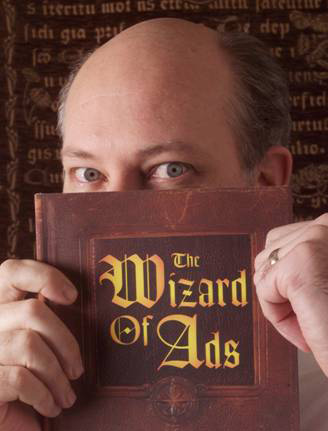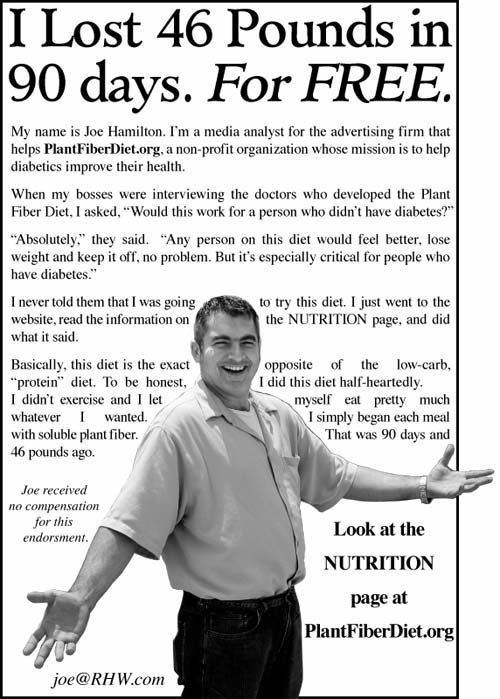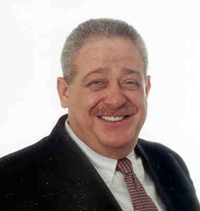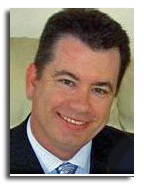| Dear Scott, Q: What's the biggest mistake businesses make in their advertising? A: They don't live up to their promises. The customer comes in with expectations set by the ads, and leaves disappointed. Not only did the advertiser waste his money, he's actually damaged his image in the minds of people who are now much less likely to become customers. No amount of advertising will overcome a bad customer experience. - Wizard Partner, Mike Dandridge Now take a look at your ads. Are you over promising? In this issue: 1. Radio/Newspaper Smackdown Newspaper and Radio were given an identical message with an identical budget spread over an identical amount of time. Who won? Read the study to find out. PS. As a side benefit to this story you'll learn how to lose weight. 2. The Importance of Frequency and How Advertising Creates Word of Mouth Two tips from this story.
1. Buy smart advertising that will get you the most Frequency.
2. Re-invest your growing revenue into an expansion of advertising.
Read the full story... Your goals are your own business. Helping you reach them is ours.
Craig Arthur - Wizard of Ads Australia PS. Have you booked your seat to Boom Your Business, Nashville? (Aug 1st & 2nd)
1. Radio/Newspaper Smackdown  Note: this article is longer than normal but well worth your time. Note: this article is longer than normal but well worth your time. By Roy H. Williams If I told you our experiment was constructed specifically to test radio versus newspaper, I’d be lying. Like most discoveries, we stumbled on this one by accident.
Here’s how it happened: Lifestyle Centers of America is a nonprofit organization whose mission is to lead you and me to a healthier, happier life through better nutrition, physical activity, and helpful new habits. My team was recruited to give them marketing advice. We accepted the challenge. Our first assignment was to craft a message that would drive interested persons to a brand new website. We decided to test our messages using a series of quarter-page newspaper ads.
(Article continued after newspaper ad below.)  The first thing we did was locate a newspaper that would deliver a quarter-page display ad to 89,000 subscribers for only $900. Total circulation would be much higher, of course, due to newsstand sales and pass-along readership, but we were looking strictly at paid circulation for the Sunday edition. If you’ve ever looked at newspaper rates, you’ll recognize this to be an extremely efficient, low-budget buy.
The second thing we did was craft a message for our client. My secret hope was to see 300 to 400 unique visitors show up within 48 hours at PlantFiberDiet.org, our virgin website. We got 71 visitors. I didn’t blame the newspaper. I blamed my message. “Tweaking” wasn’t going to get me where I needed to go, so I scrapped the whole concept of the ad and created a new message from scratch.
Two weeks later, that second message got us 217 unique visitors within 48 hours; a definite improvement, but not enough to make us happy. But I knew my message was stronger than the results were indicating. That’s when I said to one of my media buyers, “Find me a radio station that will let us air 36 sixty-second ads in one day – two spots per hour, 6A to midnight – for 900 dollars. If the program director limits us to only one spot per hour, hang up and call someone else. When you’re driving traffic with a 1-day schedule, there’s no such thing as too much frequency.”
No surprises so far, right?
Now pay attention because this next part is where most people would screw up an otherwise valid media test. To be reliable, the test has to be dollar for dollar, message for message, time for time. If we spent 900 dollars in one day with one newspaper, we needed to spend 900 dollars in one day with one radio station. “Dollar for dollar, time for time.”
Too often, advertisers want to take a one-day newspaper budget and spread it out over several days on the radio, or worse, spread it out over several radio stations. To be a fair test, we had to spend all the money in one day on one station. But radio needs repetition, so I refused to buy stations that would have delivered huge reach but with lower frequency. My 36-ad schedule was non-negotiable. Call me nuts if you want. I’ll tell you how it ended in a minute.
Take a look at the newspaper ad. Listen to the radio ad by clicking the audio bar at the top of the page. (A new page will open when you click the link. Once the ad is finished click the back button to return to the story on this page.)
You’ll notice the messages are identical. We created the radio ad by asking Joe Hamilton to read the newspaper ad into a microphone. Joe’s not a professional voice talent. He’s just the guy whose photo was in the newspaper ad. We had a better-than-average newspaper layout and below-average radio production. Newspaper was given every advantage. We even waited 2 weeks for the newspaper traffic on our website to die down to zero visitors per day before launching our radio schedule. We didn’t want to radio to have the benefit of residual traffic generated by the newspaper campaign.
The result of spending $900 in one day on one radio station? Our first test yielded 4,308 unique visitors within 48 hours. This seemed too good to be true, so I told my media buyers I was worried they’d gotten a radio buy that wasn’t typical. “Find me a deal the average buyer could buy, any day of the week, for the same price we’re paying.”
We then waited another 2 weeks until residual traffic died down to about 150 unique visitors per day, then ran the second radio campaign in a town 1000 miles from the first campaign.
As I had expected, our net result from the second test was lower than the first city where we’d gotten far too good a deal. After deducting 150 visitors per day, the first 48 hours yielded only 3,033 unique visitors for $900. This was 30 percent less than our first test, but still 14 times more visitors than our best newspaper results.
Newspaper and Radio were given an identical message with an identical budget spread over an identical amount of time. Radio delivered 14 times the results. Radio beat newspaper. We're continuing the test in additional cities, pitting the local newspaper against against a radio station in the same town. Dollar for dollar, message for message, time for time. I'll keep you informed. Maybe. From the Editor: At Wizard of Ads we use all forms of media. We have no affiliation to any media providers. We do not get paid by how much our clients spend on advertising. We do not receive any money from media. We get paid by how much their businesses grow. So when we select a media to deliver a clients message it is the one that is the highest and best use of our clients money. No bias.
Your Marketing..."Just because something seems to be working doesn't mean that it's optimal."- William Gaus
 By Michele Miller, Wizard Partner By Michele Miller, Wizard Partner 1. Buy smart advertising that will get you the most Frequency. 2. Re-invest your growing revenue into an expansion of advertising. 3. If people think your ads are annoying, that’s not a bad thing.
Chapters 44, 58, and 59 in Secret Formulas of the Wizard of Ads discuss in great detail what it takes to create an effective long-term branding campaign on radio and/or TV.
In essence, sleep is the great eraser of memory – in order for yours to be the business that customers think of first and foremost when needing your product or service, they must come in contact with your ad approximately *three times per week. In the advertising business, it’s called a “Frequency” of 3.
*From the Editor: We are assuming the ad is of average relevance. An ad we rate as a 1.0. The higher the relevance or stickiness of an ad, the less frequency is required. This is where a strong core message and good writing makes up for lack of ad budget.
As a Wizard of Ads partner, I work day-in and day-out using this principle with my own clients, to great success. Yet it was only recently that I became the puppet rather than the puppeteer:
In the last ten years, the population of greater metropolitan Phoenix (AZ) has grown from 1.3 million to 3.8 million. There are literally thousands of realtors, but only one who has had the smarts to make a valley-wide impact.
 As an independent realtor, Russell Shaw started advertising approximately five years ago with what had to have been the most miniscule of budgets. Instead of pouring his money into newspaper advertising (the traditional media of realtors nationwide), he chose television, which can be expensive. But Russell was smart. He figured out that the best use of his budget was to buy one ad per night during the 5 o’clock news hour. Every single night, that one ad would air at the same time. And since folks tend to have a favorite local news network, he was repeatedly planting that seed in the same minds. As an independent realtor, Russell Shaw started advertising approximately five years ago with what had to have been the most miniscule of budgets. Instead of pouring his money into newspaper advertising (the traditional media of realtors nationwide), he chose television, which can be expensive. But Russell was smart. He figured out that the best use of his budget was to buy one ad per night during the 5 o’clock news hour. Every single night, that one ad would air at the same time. And since folks tend to have a favorite local news network, he was repeatedly planting that seed in the same minds.
The message in Russell’s ads is acceptable; Russell himself is annoying. I’m talking a syrupy delivery with a nasal voice quality that has caused me to dash for the remote more times than I can count. I can hurry all I want to and switch channels, but guess what? Over the last five years, Russell has slowly re-invested his profit into buying the same ad on all the other networks. Apparently I can run, but I can’t hide. I’ve come to hate the Russell Shaw ads.
So the other day I was talking with a friend who’s thinking of moving to Phoenix. At one point during the conversation she said, “What I really need is a good realtor.”
My response? “Well, there’s Russell Shaw…”
Points to remember:
1. Buy smart advertising that will get you the most Frequency. Even if all you can afford is a monthly postcard, make the message smart and keep sending the regular postcard out to the same group of people. Embed your message into their brain then wait for their moment of need.
2. Re-invest your growing revenue into an expansion of advertising. If you’ve achieved maximum impact with your current mode of advertising, don’t abandon it – add on to it. Russell Shaw is the perfect example of giving a small ad budget the power of a jackhammer.
3. If people think your ads are annoying, that’s not a bad thing. If you get calls and emails saying that your ad is annoying (ads in poor taste are another matter altogether), it means you’re making an impact. And that ain’t bad. Would you rather have an ad that leaves people remembering who you are and what you do, or a middle-of-the-road ad that the brain ignores altogether? I’ll take annoying any day.
When you have advertising constraints, go for Frequency – done right, it hits the mark every time.
 Closing Thought... Closing Thought... “We must keep in mind the story of the statistician who drowned while trying to wade across a river with an average depth of four feet. That is to say, in a culture that reveres statistics, we can never be sure what sort of nonsense will lodge in people's heads.” - Neil Postman
See you next week. Craig Arthur - Wizard of Ads Australia
Your goals are your own business. Helping you reach them is ours.
Call or email to book a FREE alignment meeting. No obligation. No pressure. It is at this meeting we both decide if there is a fit between our 2 companies. It is only then can we explore your options. We will never try to sell you. Call (07) 4728 4866. |



















No comments:
Post a Comment